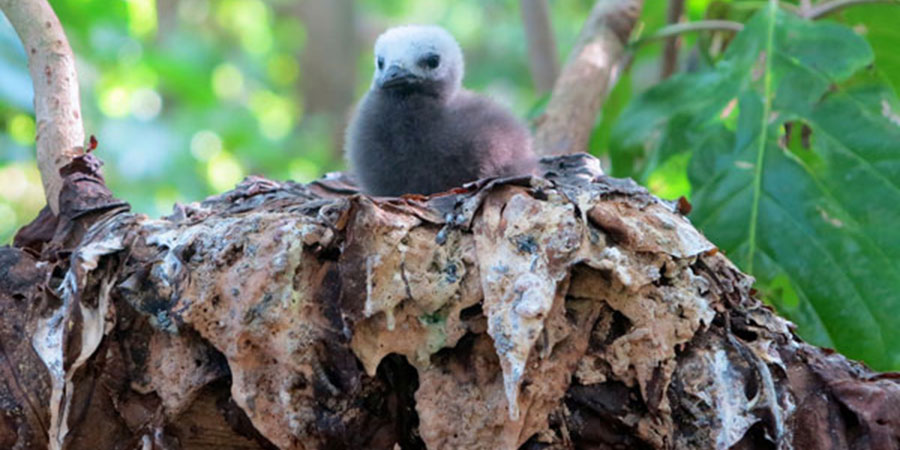
I arrived on Cousin Island five weeks ago. Since then, I have been involved in several ongoing projects such as monitoring the endemic Magpie-Robin and carrying out a skink census. My main project whilst I am here is to collect data for my final year thesis as part of my degree at Trinity College in Dublin.
I am collecting data on the breeding success of the Lesser Noddy- Anous tenuirostris- the most abundant tree nesting species in the Seychelles. I want to find out if nest site selection has a significant influence on the breeding success of individuals. At this time of year (May to September), the prevalent wind blows from the southeast, so I predicted that breeding pairs who had built nests on the windward, exposed side of the island would be less successful than pairs who chose the more sheltered forest in the centre or the leeward side of the island.
Firstly, I chose 8 sample sites using transects, which added up to over 180 nests spread across the three locations. Then, with the help of other volunteers, I began to monitor every nest twice a week, recording the presence of adults, eggs or chicks along with the condition of the nests and any other potential interesting information. I also recorded wind strength (km/h), wind direction, and rainfall at each of the sites. This allowed me to build a continuous database on weather conditions along with the progress of breeding pairs at each location.
After four weeks of monitoring, the experiment is going to plan with most eggs recorded in the sheltered location and harsh conditions including the strongest winds recorded on the southeast coast. I will continue this work until I leave, mid-way through august. By then, I will have a good idea of laying, hatching and fledging success in each of my three sample locations, which will hopefully show that Noddy pairs that chose sheltered sites were rewarded with higher breeding success.
This week saw the birth of the first Noddy chick in my sample population and many more will be hatching over the next fortnight. As well as monitoring Noddys, we have begun a full seabird census that estimates the total number of breeding pairs of each of the seabird species that nest on the island. This involves sub-sampling the whole island and counting all the nesting birds in the trees and on the ground within plots, as well as marking potential burrows of the Shearwater species, that prefer to nest in natural cavities or holes in the ground. Then, we return to the plots at night, play the calls of the Shearwater through a speaker and record the responses or nonresponses we hear at each burrow. This is no easy task and will take the best part of a week, day and night with both volunteers and wardens led by the conservation manager.
Last year the census estimated up to 150,000 breeding pairs of seabirds annually on Cousin. We will let you know how this year’s census goes.
Tim Nairn

